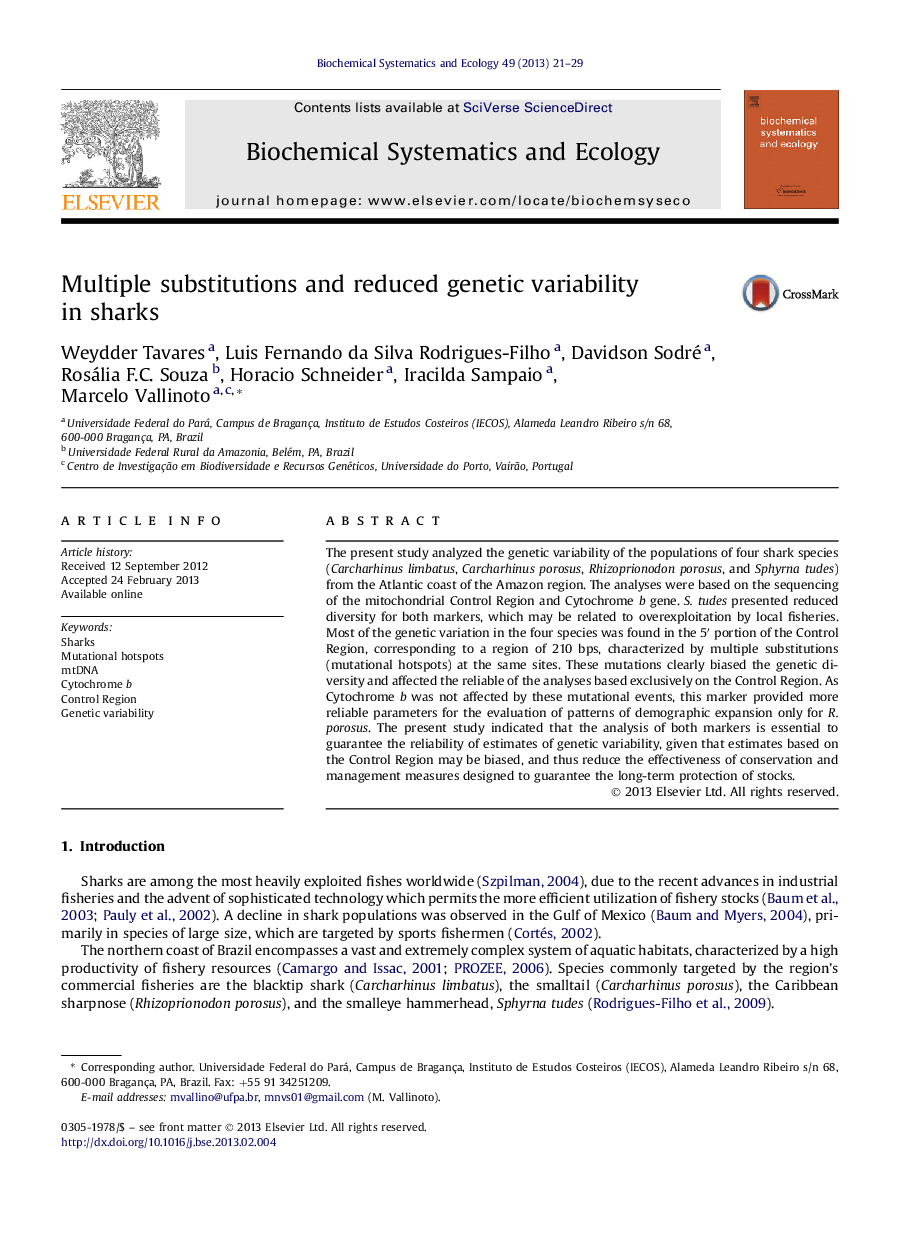| Article ID | Journal | Published Year | Pages | File Type |
|---|---|---|---|---|
| 7769247 | Biochemical Systematics and Ecology | 2013 | 9 Pages |
Abstract
The present study analyzed the genetic variability of the populations of four shark species (Carcharhinus limbatus, Carcharhinus porosus, Rhizoprionodon porosus, and Sphyrna tudes) from the Atlantic coast of the Amazon region. The analyses were based on the sequencing of the mitochondrial Control Region and Cytochrome b gene. S. tudes presented reduced diversity for both markers, which may be related to overexploitation by local fisheries. Most of the genetic variation in the four species was found in the 5â² portion of the Control Region, corresponding to a region of 210Â bps, characterized by multiple substitutions (mutational hotspots) at the same sites. These mutations clearly biased the genetic diversity and affected the reliable of the analyses based exclusively on the Control Region. As Cytochrome b was not affected by these mutational events, this marker provided more reliable parameters for the evaluation of patterns of demographic expansion only for R. porosus. The present study indicated that the analysis of both markers is essential to guarantee the reliability of estimates of genetic variability, given that estimates based on the Control Region may be biased, and thus reduce the effectiveness of conservation and management measures designed to guarantee the long-term protection of stocks.
Related Topics
Physical Sciences and Engineering
Chemistry
Organic Chemistry
Authors
Weydder Tavares, Luis Fernando da Silva Rodrigues-Filho, Davidson Sodré, Rosália F.C. Souza, Horacio Schneider, Iracilda Sampaio, Marcelo Vallinoto,
